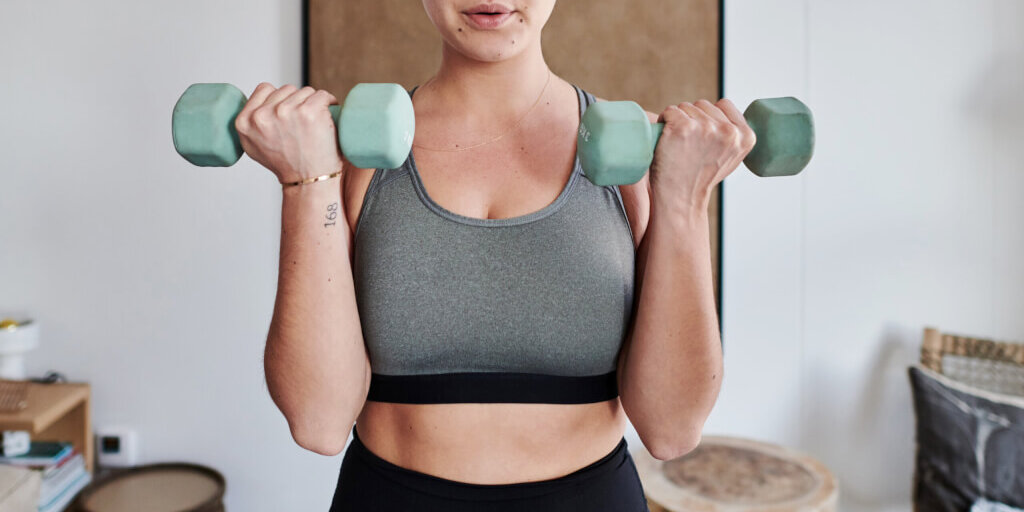Most people think that bones are hard, lifeless parts of their bodies when in fact bones are living organs full of blood and cells that are an active part of our overall health. Far from static, our bones are constantly rebuilding themselves and grow stronger or weaker depending on how active we are and how well we are supplying the nutrients they need.
It is a fact of life that our bones lose minerals as we age. Bone loss starts around 30 years old and, if left unchecked, can lead to osteoporosis, a disease where the bones lose minerals like calcium until they become fragile and break easily. Osteoporosis is called a silent disease since there are no outward signs that you are losing bone mass.
What are the Challenges?
There are many risk factors for osteoporosis:
- The amount of bone mass you start out with has a big impact on your risk of osteoporosis. If you are female, petite, white, Asian or have a family history of osteoporosis, then you have a greater risk.
- Research suggests that tobacco, heavy alcohol use, and low physical activity can all reduce bone mass.[i]
- Gastric bypass, low testosterone, high thyroid, and certain medications (like steroids or thyroid) can all increase risk.
- It is estimated that there are 10 million Americans affected by osteoporosis and at least 80% are women.
- Bone loss rapidly accelerates after menopause; women lose half their bone mass in the 5-10 years following the end of menses.[ii]
- Over 1.5 million fractures occur every year because of osteoporosis. It is estimated that one half of women and up to one in four men age 50 and older will break a bone due to osteoporosis.[iii]
What Can I Do?
The good news is that you can begin making changes today that will improve your bone health.
Here is your action plan:
- Start early: Remember that bone loss starts around 30 years old. While it is best to start when you are young, it is never too late to start nourishing your bones.
- Include weight-bearing exercises into your routine: Weight-bearing exercises increase the density of your bones because bones become stronger when put under pressure; that is why weight-bearing exercises work to build bones and slow bone loss. Consider weight lifting, walking, running, hiking, dancing, and tennis.
- Make healthy choices: Don’t smoke, limit alcohol use, and maintain a healthy weight.
- Key nutrients:
- Include plenty of calcium: Calcium is the most abundant mineral in our bones. Your diet should include high-calcium foods like milk and other dairy foods, leafy green vegetables, and soybeans.[iv] If you’re one of the many who aren’t getting enough from your diet, supplementation is key. 1000 milligrams of calcium a day in food or supplements is the recommended amount to help maintain bone for most adults; that amount increases for women who are post menopausal and men over 70 to 1200 milligrams a day.†
- Vitamin D is essential for the proper absorption of calcium from the digestive tract.[v] Even though vitamin D is the “sunshine” vitamin, most people aren’t getting enough due to the use of sunscreens, where you live, time of year or simply the amount of time we spend indoors. A new study links vitamin D deficiency to accelerated bone aging. If you don’t have enough Vitamin D, it could lead to reduced bone density, reduced bone quality, and increase the aging of bones.[vi] The best approach for determining the proper amount to take is to have your blood levels checked and then supplement to achieve your optimum levels. Most health practitioners suggest around 1000-2000 IU a day as a good starting point.†
- Magnesium is the second most abundant mineral in bones and getting around 400 mg a day is essential for good bone building.[vii]
- Vitamin K is less well known than other vitamins, but just as essential for bone building. [viii] For good bone maintenance, use between 40-80 mcg a day.
Start taking care of your bones today. Small steps today can lead to benefits later in life.
†Adequate calcium and vitamin D throughout life, as part of a well-balanced diet and regular exercise, may reduce the risk of osteoporosis. Adequate calcium intake is important, but daily intake above 2,000 mg is not likely to provide any additional benefits.
[i] http://www.mayoclinic.com/health/osteoporosis/DS00128/DSECTION=risk-factors
[ii] http://www.arthritis.org/research/funded-research/research-update/ru-march-april-2008/rate-bone-loss-menopause/
[iii] http://www.nof.org/articles/7
[iv] Volpe R, Sotis G, Gavita R, Urbinati S, Valle S, Modena MG. Healthy diet to prevent cardiovascular diseases and osteoporosis: the experience of the ‘ProSa’ project. High Blood Press Cardiovasc Prev. 2012 Jun 1;19(2):65-71. PMID: 22867092.
[v] Holick MF. Optimal vitamin D status for the prevention and treatment of osteoporosis. Drugs Aging. 2007;24(12):1017-29. PMID: 18020534.
[vi] Busse B, Bale HA, Zimmermann EA, Panganiban B, et al.Vitamin d deficiency induces early signs of aging in human bone, increasing the risk of fracture. Sci Transl Med. 2013 Jul 10;5(193):193ra88.PMID: 23843449.
[vii] Rude RK, Singer FR, Gruber HE. Skeletal and hormonal effects of magnesium deficiency. J Am Coll Nutr. 2009 Apr;28(2):131-41. PMID: 19828898.
[viii] Lanham-New SA. Importance of calcium, vitamin D and vitamin K for osteoporosis prevention and treatment. Proc Nutr Soc. 2008 May;67(2):163-76. PMID: 18412990.






